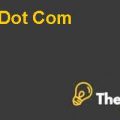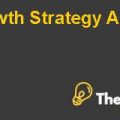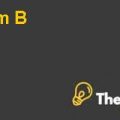Pricing The Epipen: This Is Going To Sting Case Study Help
Targeting:
The target market mainly includes peoplewho suffer from or experience allergic reactions. The target market segment based on the pricing strategy of the market, includesthe high-end market,but this negatively influences the brands’ position in the market among the current customer base. In order to remain competitive;Mylan should consider both parents of children with allergies as well as older people who experience allergies as a reaction to pharmaceutical drugs. The specified target market would allow the organization to better understand the need, demand and frequency of the drug.
Positioning:
The positioning of the product is among the high-end market,because of consistent increasing price each year.The presence of a similar product in the United States:Adrenaclick has captured themarket share of around 7 percent,with less price, i.e. $142. Similarly, a competing auto-injector,known as:Auvi-Q,was made by the French pharmaceutical organization – Sanofi S.A. but it reported the delivery of inaccurate dosage. Due to this reason, the presence of competitive players does not greatly influence the organization’s marketing position. Similarly, the users of EpiPen were found to be reluctant to switch to other products, despite of the product’s higher price. This significantly provides the organization with a competitive edge in the market. Thus, the market position of the EpiPen is highly competitive.
Alternatives:
Alternative 1 –Lower Product Price
Pros:
- Lowering the product price would allow the organization to attract more customers, toinducemore sales.
- This would allow the organization to extend the target market, which isthe development of an ability to reach a wider target audience.
- Increased sales and customer satisfaction would build a sense of customer loyalty,resulting in an increased net earnings.
- Both the organization and the customers would be benefitted by gaining a new consumer base from the lower prices,i.e. the affordable pricing.
- It would lead towards the development of the ability of having an efficient resource allocation in orderto have a better control over the lives of the individuals.
- Lowering the price would improve the organizational reputation in the market,which is greatly influenced,and has faced broader scrutiny because of the high pricing approach.
Cons:
- This might negatively influence the profit margins, and would require continuous monitoring of the product.
- Lowering the product price would create doubt over the quality of the product, because the product was initially offered at relatively higher price ranges.
Alternative 2 –Target rural area
Pros:
- Targeting the rural area with low pricedproducts would allow the organization to extend its customer base.
- Extension of the customer base would lead towards an increased revenue generation and develops a customer loyalty.
- Product offerings at low prices in the new market would assist the organization in maintaining its position in the market.
Cons:
- Despite the expansion of the customer base; the net earnings of the organization would be greatly influenced, and would require more time to experience profitable growth.
- Targeting the rural area would require efforts to create an awareness among the customers regarding the signs, symptoms, usage and efficiency of the disease and the product.
- The education, awareness and income level of the people living in rural areas, is relatively lower as compared to the people living in urban areas.
- The increased investment of both money and time, is required to successfully target the rural areas’ population.
- The identification of a particularly rural area,with the patients experiencing allergy is time-consuming.
Alternative 3 – Market Expansion
Pros:
- Despite the higher growth potential of EpiPen in the current markets;the international expansion would provide the organization with an opportunity to explore the new markets where more chances of potential growth are available.
- This would lead towards the expansion of brand recognition, leading towards the attraction of new customers and leading the establishment of credibility in the market.
- The utilization of free trade zones would lead towards the encouragement of participantsin promoting the products by foreign organizations,in transportation, storage and production facilities.
Cons:
- Governmental regulations regarding the product’s pricing and the use of the product in a particular state, would influence the decision of expanding the business internationally.
- The differentiation in culture serves as one of the potential barriers among different regions of the world, because of the change in eating habits,i.e. no use of allergen products or a very low rate of people suffering from allergic reactions.
To operate in a new market; the company would require heavy investment and new human resource support and administration for hiring the employees, to make sure of having an efficient performance inthe business operations...............................
This is just a sample partical work. Please place the order on the website to get your own originally done case solution.











